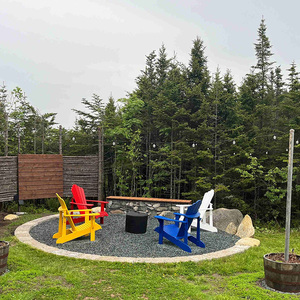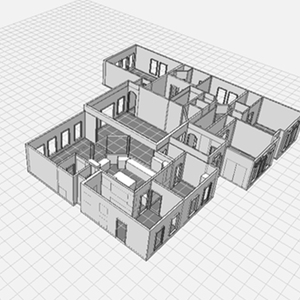I decided that I couldn’t do it all, so concentrated on other things and turned the rebuilding of a 6′ cedar board fence over to someone else. The fence builder was the general construction guy that worked for a friend of mine that refurbishes and resells older houses. He came highly recommended by my friend.
The fence has 1×6 cedar boards 6′ long attached to a 2×4 frame of ACQ pressure treated lumber. I didn’t watch him when the fence was being constructed, but it appears he used regular 15 or 16 gauge nails in a nail gun and used construction adhesive between the fence boards and the pressure treated lumber.
I didn’t pay any attention to the fence until I noticed the black streaking from the rusty nails. I will have to seal the fence boards to minimize the black streaks, but I am wondered when the nails deteriorate in the ACQ whether the construction adhesive is sufficient to adhere the fence boards to the pressure treated 2x4s (one 2×4 near the top and one near the bottom of the fence) or do I need to put a couple of coated deck screws into each fence board to make sure that they will not fall off at some point?
Yeah, I know, “couldn’t hurt” – but could the construction adhesive really stand up to years to rain, wind, and sun?
Thanks, Casey



















Replies
the trim nais are toast...
and the adhesive won't hold up...
Life is not a journey to the grave with the intention of arriving safely in a pretty and well preserved body, but rather to skid in broadside, thoroughly used up, totally worn out, and loudly proclaiming
WOW!!! What a Ride!
Forget the primal scream, just ROAR!!!
There is a lot of movement in those 1x6s so eventually they will break the bond of the adhesive. If you look at older 1x6 fencing it is hanging off the nails. That way it can move.
palin 15 Ga nailks will cease to exist in that PT within a year.
The movement of the wood from wetting and drying will break the bond of half the glue within two years.
send him back to re-fasten with SS 6D rings in a Paslode
Welcome to the
Taunton University of Knowledge FHB Campus at Breaktime.
where ...
Excellence is its own reward!
but the 15's are cheaper and make the bottom line look so much better...
Life is not a journey to the grave with the intention of arriving safely in a pretty and well preserved body, but rather to skid in broadside, thoroughly used up, totally worn out, and loudly proclaiming<!----><!----><!---->
WOW!!! What a Ride!Forget the primal scream, just ROAR!!!
the contractor,quick and cheap and no brains,who cares about down the road
Do the nails stick through the 2x4 ? Are the long enough that they stick through a little bit? That would make removing them much easier. Even if they stick through just a bit you can hit them and get the head to pop out the other side a little. Get a thin piece of material under you flat bar so you don't dent the cedar and pull the nails.
Treated deck screws are your answer. They hold tighter and as boards dry and shrink will not pull out as easily.
Yeah those nails will be gone very quickly.
The subfloor adh may survive though.
I built a new fence at my house this spring and used 2" paslode ringshank galv roundheads. They are rated for ACQ lumber. We use the 3" and 2 3/8" for framing all the time. I am very impressed with these fasteners.
Why did he use PTL for the rails on a cedar fence would be my question?
If my memory serves me the rails and posts were a very small portion of the cost of the fence. I used roughsawn cedar 4x4 posts and 2x4 rails. Looks great.
What is PTL?
Welcome to the Taunton University of Knowledge FHB Campus at Breaktime. where ... Excellence is its own reward!
Maybe, PL construction adhesive.
For good new rock music, click on: http://www.wolfmother.com
Pressure Treated Lumber.
OK, Never seen it indicated that way before.I use PT for all the fences I have built as long as I can remember. Plain cedar would only last 10-12 years here
Welcome to the Taunton University of Knowledge FHB Campus at Breaktime. where ... Excellence is its own reward!
Never heard of gluing fence boards.
I'll suggest SS bugle head screws, carefully snugged up to avoid splitting later.